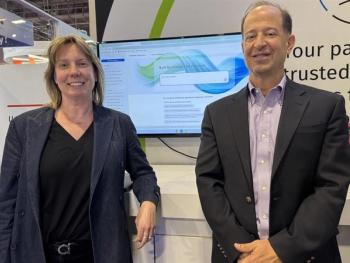
Medical Center Sees Lower Costs, Less Paper, and Easier Installation With E-Signature Pad Rollout
Not only are IT, clinical staff and patients happy with the new devices, but the hoped-for cost savings have been realized.
There were three reasons the director of patient access at a premier academic medical center in Texas wanted to test, and possibly roll out
- First, the units she’d learned about were significantly less expensive than the ones already in use at registration desks.
- Second, the devices were much easier to install than their current devices, essentially just needing to be plugged in to be recognized by the computer.
- Third, several locations at the medical center were still using paper consent forms, so moving them to e-signatures through a less-expensive device would save time, reduce errors, and eliminate paper.
Two years later, the signature pads are being used successfully at all 17 of the center’s lab and imaging clinics—nine on the main campus and the remainder at regional satellite clinics. Every front desk in the department is using the signature pads for patient consent; about 45 devices in total. The remaining 100 signature pads that the center purchased are being used for patient intake in the admitting areas in various clinics and hospitals across the main campus.
Not only are IT, clinical staff and patients happy with the new devices, but the hoped-for cost savings have been realized. The initial rollout of 67 devices saved the center $7,700 due to the lower cost of the signature pads. Subsequent device purchases, made whenever one of the past-vendor’s devices break, have saved the organization nearly $4,000 thus far. The savings continue to increase by more than $100 each time the past vendor’s device is replaced with a new signature pad.
The technology information resources manager further notes that around 89 of the new devices didn’t replace a signature pad, and were thus generating savings of moving from paper-based signatures to electronic.
Fast Swap
An additional round of savings came from reduced installation times. The previous devices used at the center took several hours to package and deploy. The IT analyst at the center explains that all device installations were prepackaged because every Windows computer was “locked down” regarding adding devices or software. After being thoroughly tested, a technician had to go onsite to select the com port and change a few other settings before the computer would recognize the old devices.
The new signature pads take about five minutes to install, what the analyst describes as plug and play. On the support side, that goes a long way, he says. If something goes wrong with a unit, IT quickly swaps in a new one, receiving a replacement device within days.
Indeed, the new deployment has been so successful that IT’s current goal is to completely phase out the past-vendor’s unit and convert all old e-signatures into a new, more standard format that’s more easily recognized by the center’s current electronic health record (EHR).
Author Information
John Powers is CEO of Scriptel Corporation.






























































































